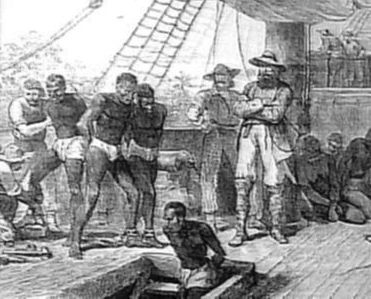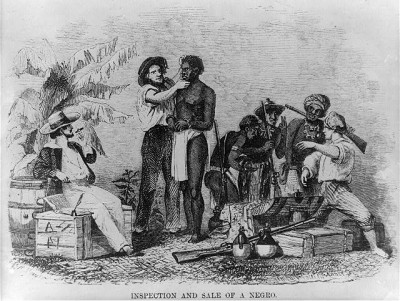Norway’s participation in the trans-Atlantic slave trade is back to haunt the country, as an alliance of Caribbean nations seeks slavery reparations. Norway was a territory state under the Danish crown at that time, but Norwegians were strongly represented at all levels in the Danish-Norwegian slave trade from 1660 to 1806, according to a Norwegian doctoral candidate.

The center of the Danish-Norwegian slave trade, according to Fredrik Hyrum Svensli at the Norwegian University of Science and Technology (NTNU) in Trondheim, was on the Gold Coast (Ghana) in Africa. Ghana’s relationship with the Caribbean dates back over 400 years and is inexplicably linked with slave trading.
Norwegians made up around 10 percent of the total crew serving on slave ships at any one time, wrote Svensli in newspaper Aftenposten recently. Hyrum Svensli’s PhD project explores the slave trade rivalry between Denmark-Norway, England and the Netherlands in Ghana in the 1600s and 1700s. That’s when Norwegians took part in what’s been called the “triangle of trade” on Norwegian and Danish ships like the Fredensborg, found wrecked off Arendal in 1974. Norwegians staffed slave forts on the African coast, sailed on the slave ships and carried goods produced by slaves back to Norway and the rest of Europe. The “triangle” went mostly from Norway and Denmark to Ghana, then to Caribbean ports such as St Croix and St Thomas and back to Scandinavia.
Those Norwegians who served at the slave posts on the Gold Coast came from various backgrounds such as soldiers, gunsmiths, artisans and even clergymen. They shared one thing in common in that they were for the most part “incompetent and reckless adventurers,” Hyrum Svensli told Aftenposten.

Fortress life was marked by chaos and a lack of discipline but some notable individuals stand out from the rest. One such exception was Cornelius Pettersøn from Bergen, a soldier and later a sergeant at the main fort at Christiansborg from 1729 to 1745. He was involved in everything from slave trading to political intrigue and in 1744 took part in a mutiny which led to complete chaos at the fort. Fortunately for Pettersøn, he was able to avoid the death penalty as he was married to an African woman (as were many Norwegians serving on the Gold Coast) and therefore was able to gain crucial support from his wife’s powerful African family and wider network.
Another Norwegian, Andreas Wellemsen, was governor at Christiansborg during the Akwamu war (1727-1730), one of the bloodiest conflicts in the Gold Coast’s history. Using diplomatic prowess he managed to secure Danish-Norwegian trade interests by both keeping them out of the war and in the process was able to secure a high number of slaves as African prisoners of war were transported from the African interior to coastal fortifications.
Søren Schielderup also served as governor at the fort at Christiansborg (1735 -1736) and in the 10 short months he was there, helped to establish one of the largest slave trade developments in Africa at the Fredensborg fort. The fort was important for the expansion of Danish-Norwegian enterprise, which was moving eastwards on the Gold Coast in the second half of the 1700s. Under Schielderup’s administration, trade was so profitable that the competing Dutch slave traders awarded a significant bounty to have him killed.

Schielderup, Wellemsen and Pettersøn were all part of a slave-processing system whereby slaves were moved, aided by African sellers, to the Danish-Norwegian slave forts on the coast where they were examined and branded like cattle with the initials “CB” for Christiansborg. They were then herded into slave barracks and ferried over the Atlantic in cramped slave ships. In total, Denmark-Norway was responsible for the shipment of more than 85,000 African slaves in the period from 1660 to 1806 (over 150 years).
Now, hundreds of years later, the heads of state of 15 Caribbean nations are demanding reparations from several European countries for the enduring suffering inflicted by the trans-Atlantic slave trade. Newspapers including The Guardian have reported that they plan to first seek “dialogue” with former slave-trading nations including the UK, France, Spain, Portugal, the Netherlands, Norway, Sweden and Denmark. The claim is rooted in an alleged cycle of poverty and degradation from which many descendants of slaves still suffer.
The Caribbean nations claim they’re not just seeking financial reparations, but diplomatic aid to help persuade countries like Ghana and Ethiopia to offer citizenship to the children of people from the Caribbean who “return” to Africa. They want help in improving the lives of poor communities in the Caribbean that they claim are still suffering from the after-effects of slavery, aid for literacy drives and, not least, an apology for their role in shipping millions of men, women and children from Africa to the Caribbean and America in the 17th and 18th centuries. It’s unlikely the European nations will accept the claims, given the time that’s passed and, in the Norwegians’ case, the fact that their participation was carried out through Denmark since Norway was not a sovereign nation at the time.
While the inhumane and exploitative suffering of African slaves is beyond comparison, Norwegian researcher Hyrum Svensli notes that life was hard for those serving at the forts as well. The priest’s son Schielderup described it as a “veritable Sodom” where there was an abject lack of respect for authority. Disease was also rampant and death rates were extraordinarily high. Those who died ended up in “white man’s graves” after succumbing to diseases such as malaria, pox and dysentery. The few Norwegians who returned to Norway alive were often blighted by their former lives in Africa, according to Hyrum Svensli’s project (external link to NTNU’s research synopsis).
newsinenglish.no/Audrey Andersen

